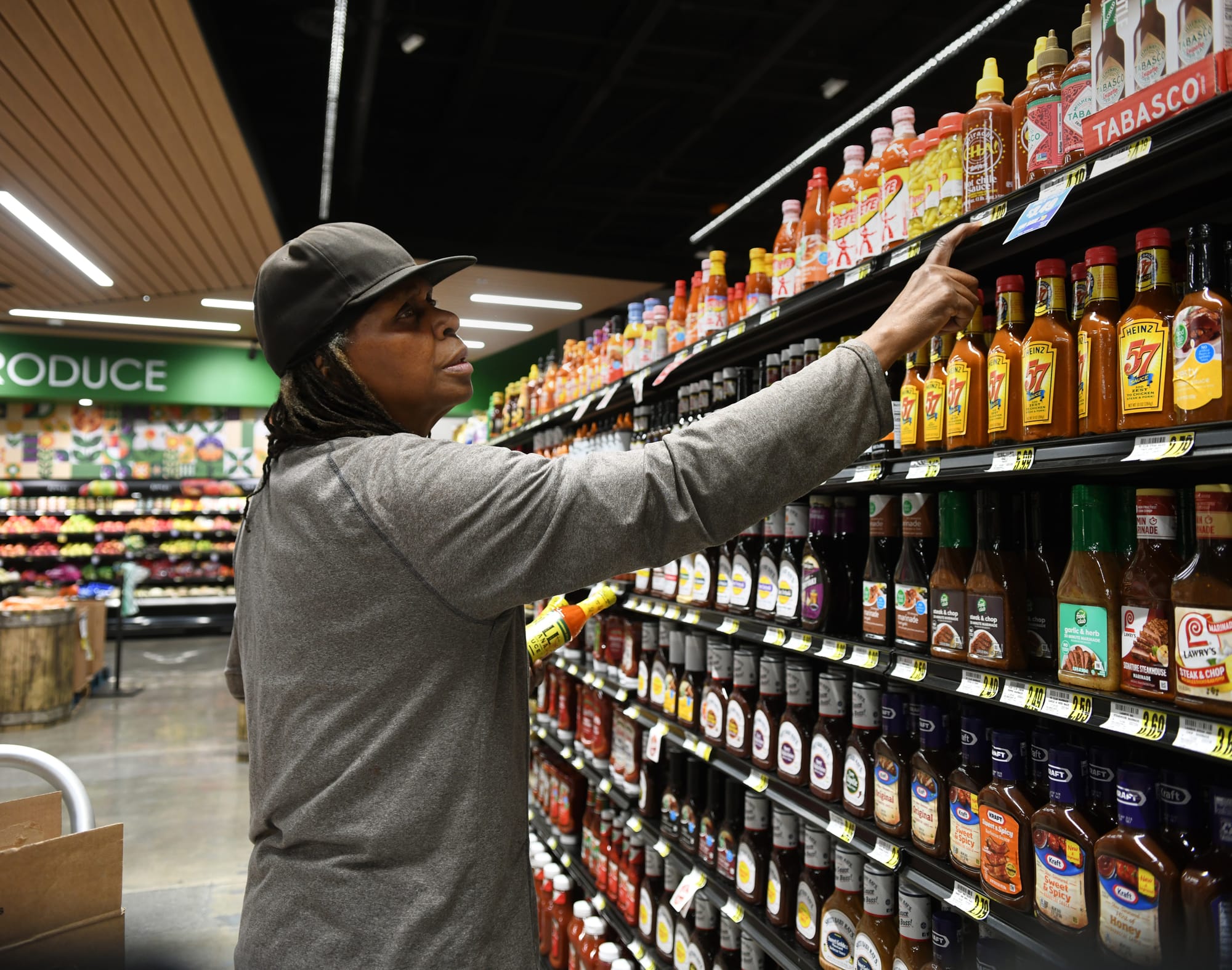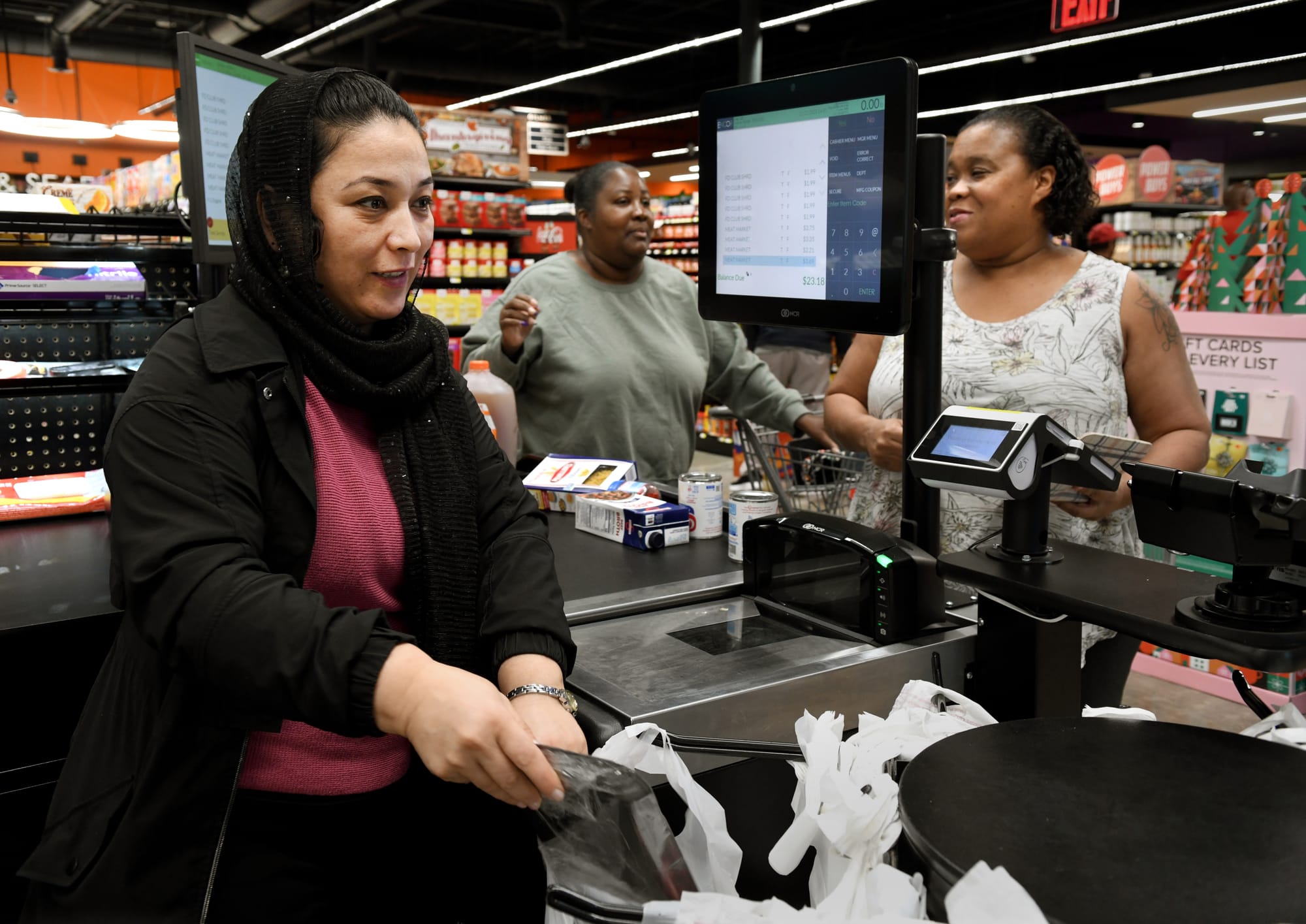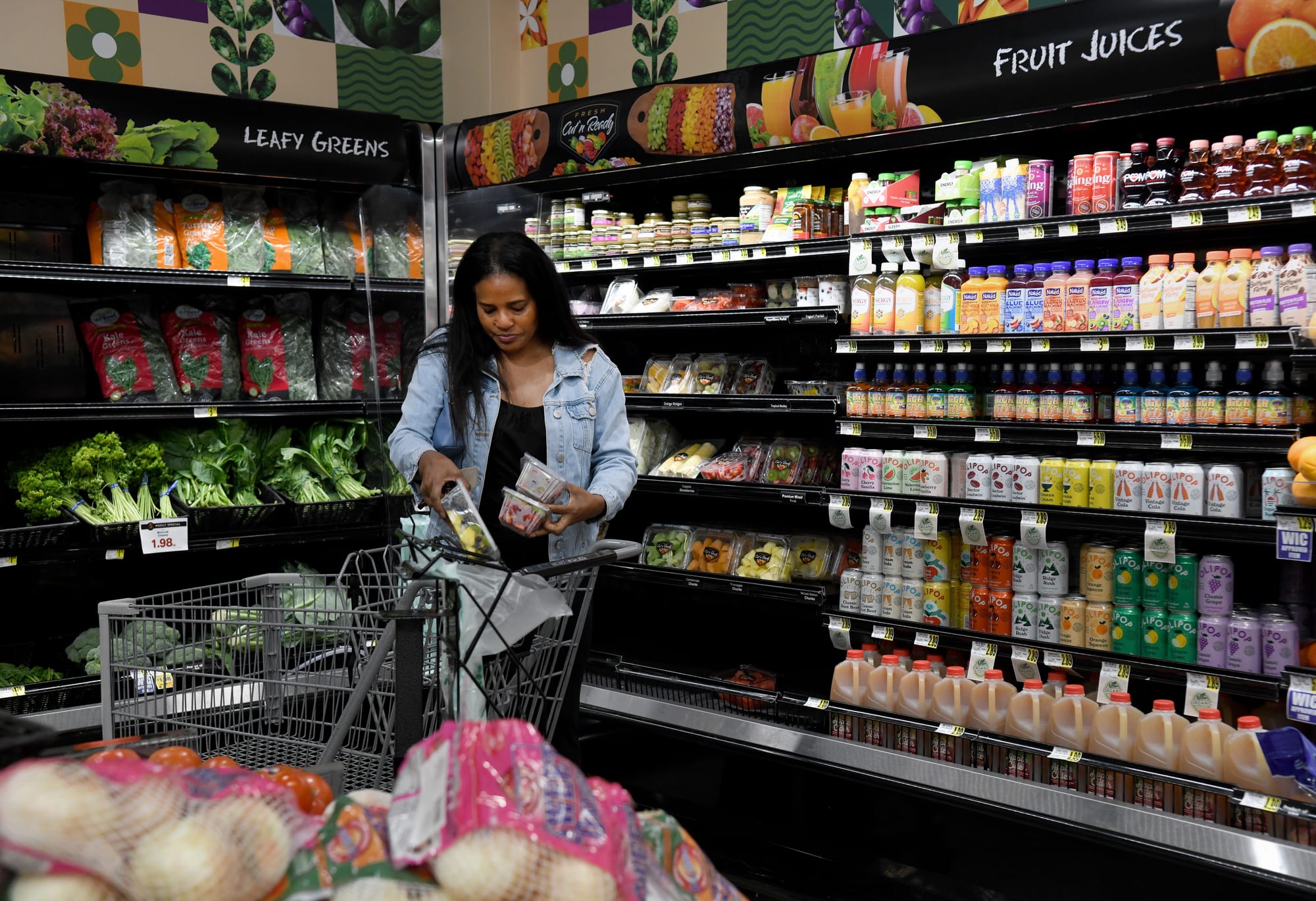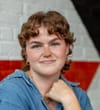‘A $30 Million Experiment': Goodwill Navigates Uncharted Territory, Deficit During Market on Melrose’s First Year
“You know, our battle has only just begun,” said a Goodwill administrator. “But we are in it to win it, and I don't have any doubt that we will.”

Market on Melrose, a new Northwest Roanoke grocery store run by Goodwill Industries of the Valleys, celebrated its first anniversary this November, marking a notable milestone for a neighborhood long ignored by major grocers.
The store isn’t just new to Northwest residents; it’s new to Goodwill, too. While the nonprofit is no stranger to retail, Market on Melrose is its first grocery store — a leap into one of the most unforgiving sectors of commerce. With rising food costs, razor-thin profit margins and instability in federal food assistance programs, independent and nonprofit-run grocers often fail to survive more than a few years.
Goodwill Chief Operations Officer Mindy Boyd said the organization is facing those industry hurdles head-on. In its first year, the market operated at roughly a $1 million deficit, she said, and Goodwill does not expect the store to be profitable for at least three years.
“You know, our battle has only just begun,” Boyd said. “But we are in it to win it, and I don't have any doubt that we will.”
If successful, Market on Melrose could be more than a win for Goodwill — it could finally provide a reliable grocer to a neighborhood that has long been left without one.
‘A $30 million experiment’
Elizabeth Ackley, a Roanoke College professor and a longtime leader of the effort behind Market on Melrose, knows just how much is at stake in the store’s success — both for the community and for Goodwill.
“Ultimately Melrose Plaza is a $30 million investment experiment,” Ackley said. “If we can put resources that people say that they need into a neighborhood, are we going to see it uplift people out of poverty?”
As a community health researcher, Ackley’s interest in Northwest was first sparked nearly a decade ago. Working with Roanoke’s health data painted a stark picture of the city: Northwest residents consistently faced the city’s poorest health outcomes, she said, with limited access to fresh food emerging as a major factor.
That data became the foundation of what would later become Market on Melrose.

In 2016, Ackley assembled a team of local officials, nonprofits and businesses to join the Invest Health Initiative, a program that supports local efforts to improve community health. Roanoke’s coalition set its sights on improving food access.
A year later, the team launched the Northwest Food Access Initiative. Surveys in the Melrose-Orange neighborhood confirmed what the data showed: Residents overwhelmingly wanted a grocery store.
To Ackley, the need for a store in the neighborhood was clear. But her market analysis revealed why none had lasted.
“I learned all about grocery development,” Ackley said. “The thin, less than 2 percent profit margin, why a grocery store wouldn’t come into that neighborhood.”
Attracting a major chain like Kroger or Food Lion proved unrealistic. And studying alternative models in other cities — co-ops, nonprofit-run stores and independent options — revealed a troubling pattern. Many closed within a few years of opening.
“We just watched them open, and then we watched them shut again,” she said. “There were a couple times that were really heartbreaking. We kept thinking, ‘Oh, that’s the model we wanted.’”
Challenges in Northwest and nationwide
The obstacles Ackley and her team encountered aren’t unique to Roanoke.
Leslie Hoglund, a public health and food equity researcher at Norfolk State University, studies the challenges of what she called “food apartheid” — “the constellation of the policies, the market and the economics around food systems that further segregate communities that have longstanding, historical and chronic discrimination.”
Across the country, many independent and nonprofit-run grocery stores have attempted to fill gaps in food access, Hoglund said. But more often than not, they struggle to stay afloat, especially in their early years.

“When you think about traditional grocery stores, they’re meant to compete in the general market,” Hoglund explained. “Especially with food prices going up right now and this competitiveness around grocery markets, a nonprofit or city-run grocery store is going to have a very difficult time competing.”
Even major chains aren’t immune to the mounting market pressure. In June, Kroger announced plans to close 60 locations over 18 months, as well as five of its fulfillment centers starting in January.
A history of turnover
Goodwill isn’t the first nonprofit to attempt a grocery operation in Northwest.
After a Kroger on Orange Avenue closed in 1985, Total Action for Progress (then Total Action Against Poverty) stepped in to keep shelves stocked.
“There was an overwhelming desire to have something local because all the big grocery stores were farther away,” recalled Theodore Edlich, TAP’s president at the time.
In 1991, TAP partnered with small, independent chain Farm Fresh to open Nick’s Grocery in the former Kroger location. Edlich recalled the excitement of opening day, with banners decorating the parking lot and city officials browsing the aisles.
“It felt great,” Edlich said. “I mean, we had the nicest kinds of cuts of meat, the freshest vegetables, the greatest fruits. It was gorgeous.”

But banker William Skeen, who negotiated TAP’s agreement with Farm Fresh, knew the risks beyond opening day. He was careful to attach a five-year continuous operations clause into the lease, he recalled, in an effort to ensure the store’s survival past the grand opening.
“I wanted a corporate entity that had muscle and the marketing to make a go of it, Skeen said, “because I knew this was going to be an uphill battle.”
It didn’t take long for the battle to start. Within a month, Farm Fresh announced it was selling all Nick’s stores to The Independent Grocers Alliance (IGA). By 1992, Nick’s had closed.
Jay’s IGA Market replaced Nick’s later that year. Then, it closed in 1994.
That same day, B.K. Community Supermarket took over. But it didn’t last past 1996, officially closing the door on TAP’s efforts.
“Sure enough, they closed it five years to the day,” Skeen said. “They weren’t making any money anyway.”
Edlich cited low profit margins, high shrinkage and the lack of brand recognition as likely factors for the short lifespan — challenges he speculated Market on Melrose will also face.
“I think on every one of those things, there’s nothing different from what they’re doing than what we did, in terms of the problems,” he said.
Edlich also noted TAP’s shortcomings in community engagement. Although TAP had surveyed residents in advance, he said they failed to ask more specific questions about their shopping habits.
“We didn’t look into the buyers’ behavior,” he reflected. “Nobody was asking, where are you shopping now? When do you go to the store? Do you go with other people?”
Hoglund, the Norfolk State professor, stressed that robust community engagement is key for independent grocers and nonprofits looking to make a sustained impact.
“Plopping a grocery store down in the middle of the area is not enough, and it will never be enough,” Hoglund said.
“There’s a lot of mistrust in things that are independent when it comes to food because a lot of people want the brand name,” she added. “So independent grocery stores are going to have a harder lift getting the community to come. But if they don’t trust you, they won’t come to you.”
According to Skeen, nonprofit-run stores haven’t figured out “the special sauce” necessary for long-term success — a concern he has for Market on Melrose.
“You’ve got all these problems,” he said. “You got shrinkage. You’ve got margins that don’t support this. You got the current administration reducing SNAP and Medicaid benefits. This is not good for a grocery store or a community — especially one that’s trying to pull together cultural, medical, banking, grocery store and everything into one center."
His warning for Goodwill: “If they don’t engage the community, they’re dead.”
A 'for-profit mindset'
After years of surveying residents, collecting health data, and attending neighborhood meetings, Ackley, the Roanoke College professor, jokes that she became known as “the grocery lady.” It took time to gain that title — and to build trust that she would follow through on her promise.
“Staying power is important, and also a sign of respect for the people that you’re working for,” Ackley said. “It probably took three years for people to actually recognize that, oh, she’s gonna stay. She doesn’t just show up, collect data and leave, and we never see her again.”
In the meantime, Ackley and her team spent day after day chasing potential operators for the store. One by one, they each fell through.
“I mean, we would get a site, and we’d get a commitment for a site, and then we get a big grant to try to move things forward, and then the site owner would leave,” Ackley recalled. “That happened three or four times.”

Finally, a breakthrough came in 2021: Roanoke City Council committed $10 million in federal pandemic relief funding to the grocery project. With the city’s investment on the table, Goodwill stepped in with $20 million of its own.
Boyd, the Goodwill COO, said the organization understood the great risks of the grocery industry — and the track record of other nonprofit-run stores — when it took on the project.
“A lot of the small, independent grocers go into food deserts,” she said. “The ones that end up folding, it’s not because they haven’t done every single solitary thing they can to keep it alive. It’s very hard, the grocery business.”
Goodwill entered the industry expecting losses in its early years, Boyd said, adding that the roughly $1 million deficit of the store’s first year was “right on target” with what the company planned to invest in the store.
“We fully accepted the fact that the three-to-five-year ramp-up is real,” Boyd said, “and we’re going to have to accept it as part of the investment that Goodwill is making into this new vision.”
The $10 million investment from the city required that Goodwill spend the total amount by December 2024. The city is no longer involved in the store.
“While the $10 million from the city was absolutely a massive injection of money to help us get started, it did cost us more than $10 million to get the grocery store open,” Boyd said.
What sets the Market on Melrose approach apart from other nonprofit stores, Boyd said, is Goodwill’s “for-profit mindset,” honed through decades of running its thrift stores.
“We run our Goodwill stores in a way that is very business-minded,” she said. “They have sales expectations. They have production expectations.”
“I think the advantage that Market on Melrose has is sitting on the foundation of Goodwill Industries of the Valleys,” she continued. “We are closing in on the last few years before we turn 100 years old. We have a very solid business model that supports mission. And without that, I don’t think Market on Melrose would have come to life.”
According to Boyd, the nonprofit aims to break even within three to five years. After that, the goal is for the store to be profitable, allowing Goodwill to invest revenue back into Melrose Plaza, which houses a Goodwill-run adult high school and health center, as well as Bank of Botetourt, The Harrison Museum of African American Culture and the Melrose Branch Library.
Today, the market sees an average 15,000 to 16,000 transactions a month and has 42 employees, with entry-level positions starting at $14 an hour, according to Boyd. Goodwill aims to hire at least half of the employees from the local neighborhood, she said.
LaCresha Waller, the store’s customer service manager, has been working for Market on Melrose from the day its doors opened.
“It was exciting,” she said, recalling the opening day celebration. “I’m from Northwest, so seeing a grocery store here where it’s been a food desert for over the last 40 years — it was great.”
Having spent the year face-to-face with customers, Waller said one of the main challenges she’s observed is a lack of community awareness about the store.
“We do have a lot of low-income apartments around us, and you know, they still don’t know that we’re here,” she said. “We’re here to serve them.”
Being based in a low-income community, Waller said, has also shaped some customers’ expectations of the market’s prices.
“People think that we’re going to be pretty much cheap, very, very low,” she said.
Boyd echoed Waller’s sentiment: “I think the one main thing that customers always want to challenge us on — and it’s absolutely what they should be challenging us on — is making sure that our pricing is meeting their expectations.”
“Before the grocery store opened, I was asked a lot, ‘How are you going to beat Walmart’s prices?’ she continued. “And I was just very frank with them and said, you know, nobody can beat Walmart’s prices. We’re going to be a small independent company. Here’s what I can tell you: We’re going to have fair pricing.”
Boyd said the store has implemented awards programs, discounts and weekly deals like “Free Friday” to help keep prices down amidst the national trend of rising food costs.
Boyd credits MDI, the market’s wholesale distributor, with helping Goodwill navigate everything from inventory and floor planning to department management and spoilage reduction — a “big learning curve” for the company.
In the first year, Boyd said the market focused on staying grounded to its core mission: providing “access to fresh fruits, vegetables, meats.” Moving forward, she said the team is looking forward to “adding layers,” including options for online ordering, pickup or delivery.
For Waller, being customer service manager at the brand-new store has meant embracing constant change. From filling gaps in different departments to learning how to manage spoilage reports on the fly, every day brings new challenges — but none have dimmed Waller’s enthusiasm for the market or her future there.
“They take care of me,” she said. “If I can be here for another 15 years, I’d be happy.”
As for Goodwill, the store’s long-term plan is clear: “For the grocery store itself is to stay forever,” Boyd said.
“We want it to be a permanent fixture of Roanoke City.”

